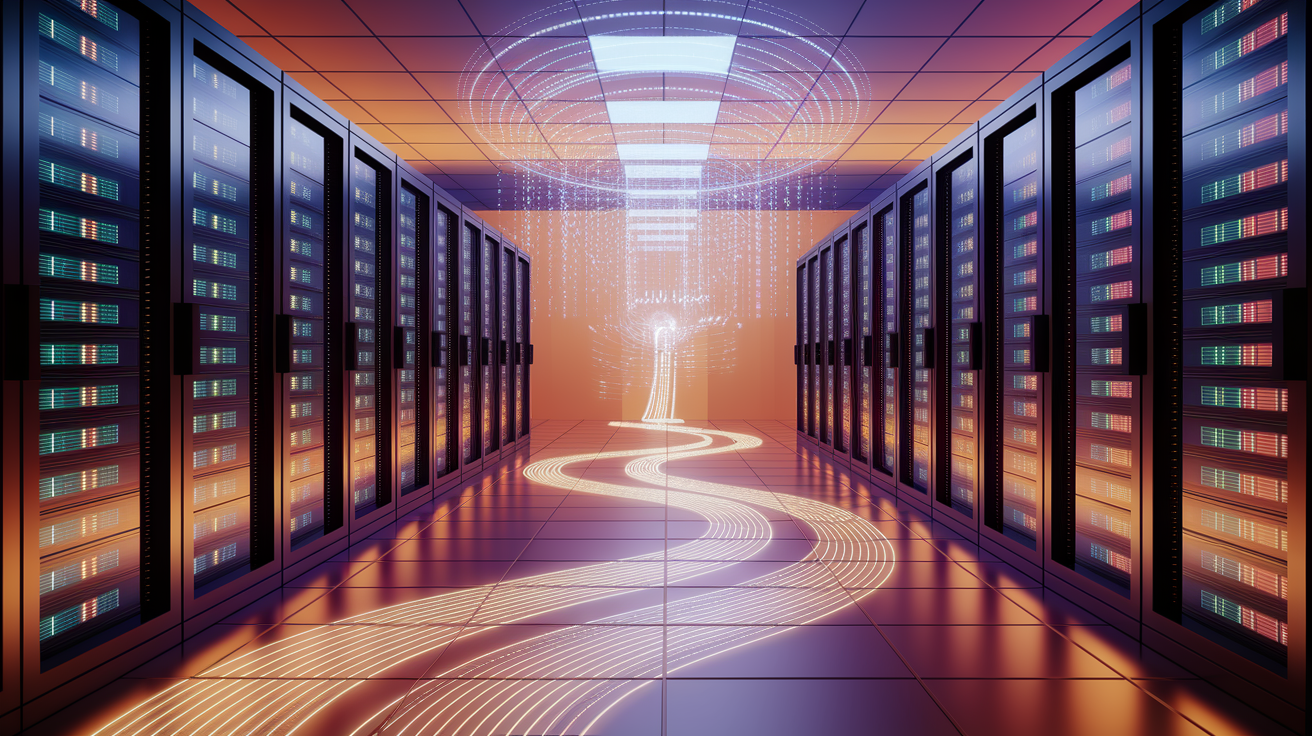Artificial intelligence manifests as an invisible architect, redesigning the foundations of our industries. In particular, in the IT & telecommunications and healthcare sectors, AI emerges as a powerful lever that optimizes processes and opens new horizons. These two chapters highlight how AI not only changes existing structures but also creates new business models and opportunities. Investors and individuals should understand the disruptive potential of this technology to benefit from the profound changes it brings.
The Revolution of IT and Telecommunications Through Artificial Intelligence

Artificial intelligence (AI) has established itself as the driving force behind significant transformations in the IT and telecommunications sector. With its data analysis and automation capabilities, AI revolutionizes the operation of networks, offering numerous advantages while also introducing new challenges.
A significant advantage of AI in the telecommunications sector is the enhancement of efficiency and cost reduction. Through AI-supported optimizations, network operators can improve the performance and reliability of their networks while simultaneously reducing operational costs. According to a survey, 77% of participating companies report measurable savings made possible by the use of AI.
Another important area of application is network optimization. AI-supported systems play a central role in network planning and operational operations, making automatic adjustments and proactively addressing challenges. This has led approximately 40% of companies to use AI technologies to enhance efficiency. Furthermore, the influence of generative AI is growing, specifically used to provide customer-oriented services. Many companies have already implemented initial applications that benefit from technological advances of this kind.
The development of AI phones and digital assistants opens new possibilities for user interaction. Innovations that simultaneously handle voice, text, and images make everyday tasks more accessible for users without technical barriers.
However, this growth is accompanied by significant challenges. The increase in energy consumption and environmental risks is concerning. Processing large volumes of data requires an increasing energy demand, and cooling data centers consumes large amounts of water. Such demands have significant ecological consequences.
Moreover, market concentration poses a challenge, as a few large companies dominate the market, influencing the use and development of AI technologies. This influence can lead to selective trends, ranging from the choice of training data to the manipulability of results.
Security concerns cannot be overlooked. With the increasing complexity of AI systems, vulnerabilities may be overlooked, leading to unwanted access to users’ personal data.
Regulations play a central role in this context. The European Union has adopted measures to harmonize and ensure the safe use of AI systems. These regulations provide a legal framework aimed at ensuring responsible growth in the use of AI and severely punishing violations.
In summary, AI offers the IT and telecommunications industry multiple opportunities for development. However, these opportunities require careful management to minimize associated risks and integrate technology sustainably and safely.
The Influence of AI on the Revolution in the Healthcare Sector

Artificial intelligence (AI) is starting to reshape the healthcare landscape, not only changing how diagnoses and treatments are made but also transforming administrative processes. A central element of this transformation is AI’s ability to efficiently analyze vast volumes of data. This opens new horizons in diagnostics, such as early detection of diseases like cancer or neurological disorders, increasing the likelihood of successful treatments.
This technology also changes the field of personalized medicine. By analyzing clinical records, genetic profiles, and scientific literature, treatment plans are customized. Such deep interventions allow for medical care tailored to each patient’s individual needs.
Another interesting area of application is surgery, where AI-guided robots assist in precise and minimally invasive interventions. Additionally, telemedicine significantly improves access to medical care, enabling patients even from remote areas to access specialized healthcare services.
The potential of AI is also highlighted in drug development. Complex algorithms analyze molecular structures, accelerating the discovery and market introduction of new drugs. The same technology is used to predict health risks. Wearable devices and AI applications use real-time data to motivate patients toward preventive measures, allowing for long-term cost savings and improving healthcare.
However, challenges persist. Protecting sensitive health data is of utmost importance, with the EU AI Act introducing regulations to ensure that innovations occur in safe and secure processes. Furthermore, it is necessary to strengthen trust in AI-based healthcare solutions to overcome cultural barriers to acceptance. Technological progress requires significant investments in digital infrastructures, increasing the economic pressure on healthcare institutions.
The future of the healthcare system is inextricably linked to the evolution of AI. To remain competitive globally, Germany must resolutely pursue its digital strategy. In this context, a clear legal framework plays a crucial role in supporting investments in cutting-edge technologies and in taking a leadership position in the international healthcare sector.